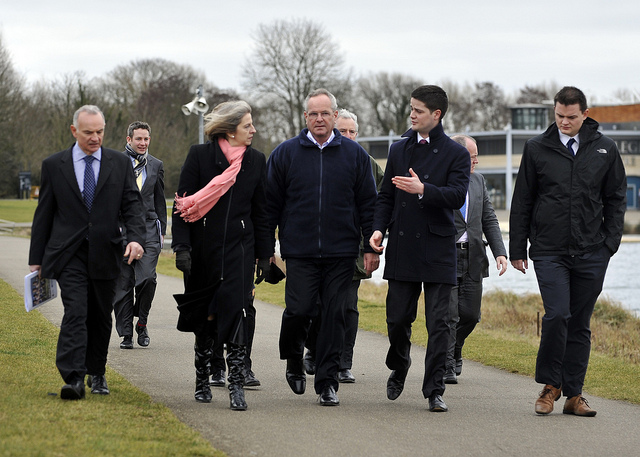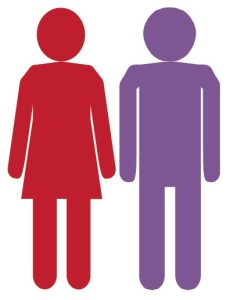Female politicians receive less attention in the press now than they did 20 years ago
Despite the rise in the number of female MPs and victories of feminism over the last twenty years, there has been no corresponding increase in the amount of press attention they are afforded. Indeed, women are still less likely to be taken seriously in the press, with men continuing to be portrayed as more serious and qualified. Deirdre O’Neill and Heather Savigny argue that if want a genuinely more democratic press its male dominated nature must be challenged.
Twinkle toes Theresa May brings some sparkle to the Tory Party conference’. Is this really how we talk about female politicians? ‘Cameron’s Cuties’ and ‘Blair’s Babes’ are the eponymous headlines; yet at the same time ‘Calm down dear’ (Cameron’s 2011 comment in parliament to Angela Eagle) is part of the political reality. Intuitively, we thought female politicians seem to be women first, MPs second, whereas to be an MP is to be the male ‘norm’.
Advances in feminism have challenged the status quo and improved the positions of women in a whole host of ways (although that is not to suggest the struggle is over). But in the context of still so few women in Parliament (only 22.3% elected in 2010) we wondered – how do the media present female MPs, and what, if anything, has changed over time?
We undertook a systematic quantitative analysis of the prominence of female politicians and their coverage in the press. Were they descriptively represented in the press proportionately to the way in which they were descriptively represented in parliament? As women’s representation in Parliament increased (albeit slowly) over the years, did their media coverage increase? And when women were featured, how were they represented? As politicians? Or as female politicians? Was the focus on the policy or the personal?
We took samples from the newspapers over a 20 year period, 10 years apart. So we sampled a ‘news week’ in 1992, under a Conservative government; in 2002, under a Labour government; and 2012, under the coalition. A range of newspapers, red-tops, mid-market titles and quality papers, with a range of political persuasions, were used. We noted any article that featured politicians and recorded the gender.
And this is what we found: Back in 1992, female MPs made up 9.2% of parliament, and interestingly they received a similar proportion of coverage in the press (9%). It also roughly corresponded in 2002 (17.9% of MPs were women and they received 17% of press coverage). However, by 2012 there was a decline in the quantity of coverage compared to their numbers in Parliament (22% compared to 16% press coverage).
We were also interested in who gets a voice in the press. Interestingly, 20% of quotes in 1992 were from female politicians, despite making up just 9.2% of MPs; this dropped to 10% in 2002 (when there had been an increase of female representation in Parliament to 17.9%) and only rose to 13% in 2012 (22% representation in Parliament). So we are hearing fewer female politicians’ voices than 20 years ago when there were fewer women in Parliament.
Not only then are women proportionately less represented in the press, but they also get to speak less. And when they are featured, women are much less likely to appear in policy related stories than men.
It is revealing to look into what the focus of this coverage is: by 2012 there was almost double the amount of personal stories about female politicians as opposed to male (9.1% to 5.3%) and, overall, in all the samples, male politicians appeared in what could be termed straightforward ‘political’ stories 10% more often than women. On average over the three years sampled, female politicians appeared in more stories related to wider society and events (about 14% more often than men).
Overall we found a worrying trend: female politicians are now rendered less visible; when they do appear they are more likely to feature in articles that are less straightforward political stories; and we are less likely to hear from them in their own words than 20 years ago. Despite the advances of feminism and increases in women’s descriptive representation in the corridors of power, it seems that the media are reluctant to let go of the idea that the ‘norm’ of the politician the man who speaks seriously about politics.
The current furore around press regulation only scratches the surface. If we want a genuinely more democratic press the fundamental structures on which it is premised need to be challenged. Politics and media remain dominated by men and male interests, and it is these fundamental structures which need to be challenged. Refreshingly there are journalists who do challenge the patriarchal orthodoxy: The wider message of our findings is that these challenges to existing power structures need to be encouraged so that we can see women represented in ways which reflect the diversity of women’s interests, rather than as male interests would like them positioned.
—
Note: This post originally appeared on the PSA blog and can be viewed here. It is based on a paper presented at the PSA Media and Politics group annual conference earlier this month. The authors are grateful to Tori Cann for assistance with the data collection for this study. It represents the views of the authors and not those of Democratic Audit or the LSE. Please read our comments policy before posting. The shortened URL for this post is: https://buff.ly/Ij5n8J
—
 Deirdre O’Neill is Associate Principal Lecturer in Journalism at Leeds Trinity University.
Deirdre O’Neill is Associate Principal Lecturer in Journalism at Leeds Trinity University.
Dr Heather Savigny is Senior Lecturer in Politics at the University of Bournemouth







 Democratic Audit's core funding is provided by the Joseph Rowntree Charitable Trust. Additional funding is provided by the London School of Economics.
Democratic Audit's core funding is provided by the Joseph Rowntree Charitable Trust. Additional funding is provided by the London School of Economics.
Female politicians receive less attention in the press now than they did 20 years ago https://t.co/H86G5rejZs